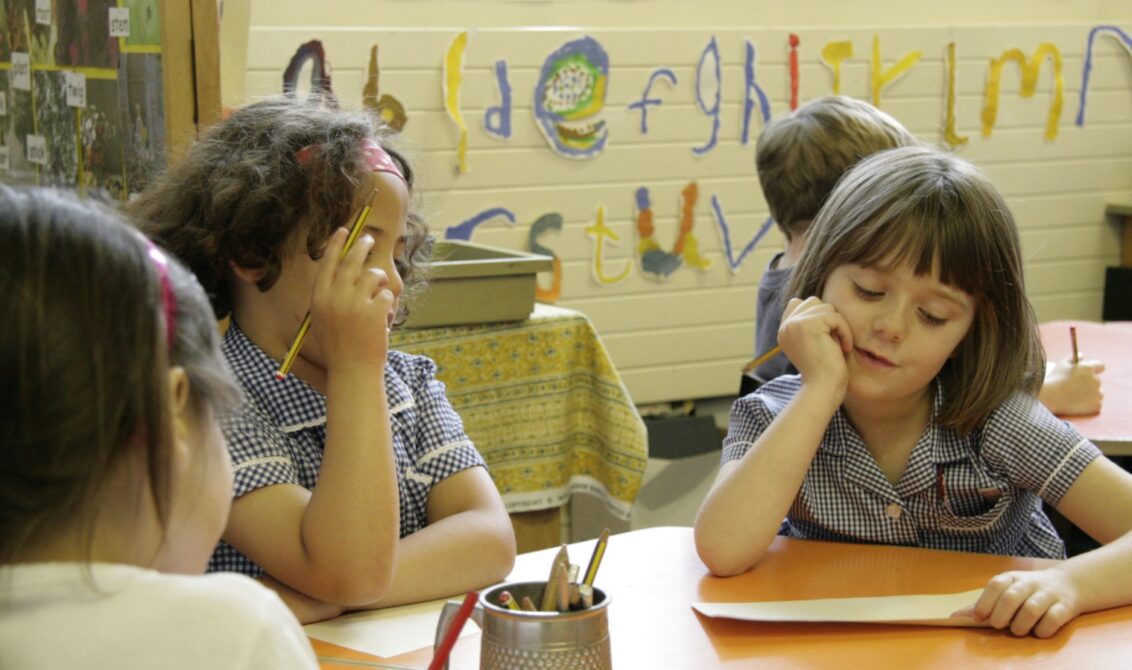
As World Literacy Day draws closer, schools everywhere reflect on how learning to read and write plays an important role in shaping young minds. Spelling is key to literacy as we can’t recognize words or communicate as effectively without it.
But given the complexity of the English language, learning the rules can be challenging for students. Read on to discover how to teach spelling simply but effectively in a multilingual classroom.
1. Build a foundation with phonics instruction
Teaching phonics shows students the relationship between the letters they see (the graphemes) and the sounds they hear (the phonemes). This is especially crucial for learners with a phonemic first language, like Spanish and Czech, as they won’t be used to inconsistent spelling and pronunciation.
Start by teaching simple letters and sounds and then build on that knowledge. For example, teach the hard ‘c’ in ‘cat, cup, cool’ before introducing blended consonants like ‘clock, school, cross’.
2. Teach word patterns
With a strong knowledge of phonics, students are ready to tackle spelling patterns. Research shows rule-based learning is a powerful teaching method as your students can apply what they learn to a wide range of vocabulary.
You can take five to ten words from the topic you’re covering that demonstrate a rule. For example, if you’ve taught hobbies, students will already be aware of verbs with silent ‘e’ like ‘ride’, ‘bake’, and ‘dance’.
Present the words and question students about the pronunciation. Is it ride or rid-ee? Can I see the ‘e’? Can I hear the ‘e’? You can mime confusion and point to your eyes and ears to aid comprehension.
Through answering the questions, learners will realise that you don’t say the ‘e’ at the end of many monosyllabic words with a long vowel sound.
3. Make the most of word lists
As you introduce vocabulary sets, students can also learn the spelling. The key is to add a manageable amount of words per week so you don’t overwhelm them. While the exact number depends on the age group and complexity of the language, aim for around eight to 12.
Four to six-year-olds benefit most from oral exercises as they won’t have mastered writing full words and sentences yet. You can have them say the letters of the word aloud or teach them chants.
As students develop fine motor skills, you can ease them into written spelling practice by tracing dotted words and colouring balloon letters. Start by using three and four-letter words that take less effort to write.
4. Use spelling strategies a.k.a ‘look, say, cover, write, check’
‘Look, say, cover, write, check’ (LSCWC) is a memorisation exercise students can use to practise spelling. Here are the basic steps:
- Look: Check which letters, how many of each, and their order.
- Say: Repeat the word aloud several times.
- Cover: Put a hand or a piece of paper over the word.
- Write: Try writing the word from memory.
- Check: Uncover the word and compare what you wrote. Note any errors.
LSCWC is helpful for navigating a multilingual classroom as you can easily adapt it for different learners.
5. Keep learners interested with interactive activities
Many students struggle with spelling and become dispirited when they perform less well than their peers. Games and activities can make learning to spell more engaging for them. As these exercises usually test other skills besides memory and pattern recognition, you can also level the playing field.
When you need students to be calm, you can use puzzles like word searches and spelling jigsaws. These also make great filler tasks for students who finish tasks early.
For warmer activities, play games like spelling bees, bingo, and Scrabble. One popular, low-preparation activity is a relay where groups take turns running to the board to spell a word before the other team does.
6. Get creative with art activities
Long days at school can tire out primary students. You need to combine structured spelling strategies with freer, more creative tasks to keep learners fresh. There’s a lot of room for ideas but here’s a quick list to inspire you:
- Sculpting words out of flexible material like pipe cleaners or playdough
- Using unconventional materials to write like chalk, water, or gel
- Creating a collage out of cut-up letters from magazines and newspapers
- Illustrating letters and words with images that symbolise them
- Cheerleading or yoga exercises where learners spell words with their bodies
7. Prompt learners with visual aids
Hang words around the classroom to give learners more exposure to new vocabulary. You can make word walls for weekly topics using large, colourful letters and pictures. Involve students in creating the display to give them more ownership over what happens in the classroom.
Interactive whiteboards are another way to display word lists. Create a screensaver with all the words in bold fonts that will come on as the students are working and playing.
8. Offer positive reinforcement
One of the best techniques to support literacy in the classroom is encouraging and praising correct spelling. That can be as simple as saying “well done”, to offering rewards like stickers and tokens. Positive reinforcement is so impactful that studies show a significant difference between the test scores of children who receive it and those who don’t.
Students may lose focus and make more spelling mistakes during freer writing practice. Make sure to motivate and praise them outside of controlled practice so they’ll apply their knowledge broadly.
9. Show parents how to teach spelling at home
Family involvement plays an important role in getting literacy right at international schools. Students’ parents and guardians model good reading habits, provide extra support and give you deeper insight into their children’s struggles.
That’s why it’s a good idea to keep families updated about what their children have been learning, and show them how to assist with homework. Parents can be more supportive if they understand, for example, how to do an LSCWC with their children, and are able to reinforce classroom learning at home.
Read more
If you feel inspired to create some spelling displays, you might find more inspiration in our article on how to create a stimulating classroom environment for your students. If you’d like more ideas on how to get your students’ parents involved with what’s happening in your classroom, then check out our blog on boosting parental engagement in your school. Finally, read more tips on how to create a love of learning in early years education, to keep your littlest learners motivated and excited about learning!
Subscribe to our blog
If you’d like to stay up to date with our latest articles, why not subscribe to our blog? You’ll get a fortnightly roundup of the articles you’ve missed straight to your inbox, plus links to free teaching resources.

